2017 Chrysler Pacifica Hybrid Review

After wracking my brain for weeks, I still can’t think of a good reason why all minivans aren’t like the 2017 Chrysler Pacifica Hybrid.
The minivan market is obviously shrinking at a steady pace and buyers are still averse to the idea of relying on alternative fuels to get around, but this new version of the Pacifica could be the best people-mover on the market. And it’s also one that just so happens to burn less fuel than a Honda Civic does on the highway.
Incredible Economy
And I don’t just mean the often unattainable government fuel economy rating — though I will ask that you ignore the seemingly arbitrary MPGe number assigned to the Chrysler Pacifica Hybrid. No, I’m talking about real-world consumption. My week behind the wheel saw the the family-hauler burn a grand total of 4.2 gallons (16 liters) of gas over a little more than 250 miles (400 kilometers) of driving. With most of that done on the highway, the van returned an incredible combined average of 45 mpg (5.2 L/100 km).
Bear in mind this behemoth weighs a whopping 4,987 lb (2,262 kg). That’s more than two Mazda Miatas worth of sheet metal. More amazing still, I traveled a greater distance on electrons (148 miles/ 238 kilometers) than I did on fossil fuel (103 miles/165 kilometers), a product of its 33 miles (53 kilometers) of all-electric range.
ALSO SEE: 2017 Toyota Prius vs Hyundai Ioniq Hybrid Comparison
Despite that somewhat disappointing electric-only range, the Pacifica Hybrid is packed with all the right stuff to make it an efficiency extraordinaire. It starts with a gas engine — it’s basically the same 3.6-liter Pentastar V6 found in the non-hybrid Pacifica, as well as just about every other FCA product it will fit in — that’s been combined with a continuously variable transmission that features a dual-motor electric drive system, as well as a 16-kWh battery pack that’s been stuffed under the second-row seats.
Plugged into a standard 120-volt household outlet, the lithium-ion battery takes about 12 hours to charge. With the advantage of a 240-volt supply, charging the battery from dead only takes two hours or so. With a total range of roughly 560 miles (900 kilometers) on a full charge and a tank of gas, the Pacifica Hybrid really is the best of both worlds. But best of all, with regular charging, most folks will barely burn any gas during the daily commute, instead sticking to a diet of nothing but electrons until the battery is depleted.
Unfortunately, my condo doesn’t offer EV charging, which meant the only option I had during my time with the minivan was to charge while at the office. Thankfully, I was able to find a lot around the corner from AutoGuide.com HQ where I could park the Pacifica for $12 a day and plug it into a Level-2 charger for free.
FAST FACTS
| Engine: | 3.6L V6, 16-kWh lithium-ion battery |
| Output: | 260 horsepower combined (est.) |
| Transmission: | e-CVT w/dual-motor electric drive |
| US Fuel Economy (MPG): | 45 combined (observed) |
| CAN Fuel Economy (L/100 km): | 5.2 combined (observed) |
| US Price: | Starts at $41,995 |
| CAN Price: | Starts at $52,495 |
Perfect Road Trip Companion
To describe my week with the Pacifica Hybrid as anything but blissful would be an understatement. Whether in the muffled whir of hybrid mode or the near silence of all-electric driving, I was struck by a ride quality that’s about as smooth and compliant as a large luxury sedan. Aided, no doubt, by the weight of the battery pack, the hybridized Pacifica rolls over road imperfections like they’re barely there.
Add in the fact the Pacifica packs enough room for seven people, not to mention all their stuff, and I can’t think of a better way to move a family. And before you crossover fans get cranky, I’d like you to explain what your beloved CUV does better than a minivan, aside from provide you with a false sense of security or make you think you look cool (trust me, neither of those things are true). Not even a Chevrolet Suburban can touch the Pacifica when it comes to its combination of passenger and cargo volume.
ALSO SEE: 2018 Volkswagen Atlas vs 2017 Honda Pilot Comparison
Second-row legroom stands at a respectable 39 inches (992 millimeters), while the last row still gets a respectable 36.5 inches (929 mm). While geared towards children, adults won’t find themselves put out my what’s on offer. When it comes to cargo room, there’s 32.3 cu-ft (915 liters) of space with both rear rows of seats upright, while tumbling the third row into the floor opens up 87.5 cu-ft (2,478 liters). Finally, removing the second row reveals an epic 140.5 cu-ft (3,979 liters) of space.
But beyond how much can be stuffed inside, the Pacifica Hybrid comes with, well, plenty of stuff inside. Only available in two leather-lined trims, the only gas-electric minivan on the market leaves little to be desired in terms of creature comforts. Tri-zone automatic climate control and an 8.4-inch touchscreen infotainment system are both par for the course, while the interior is a thoughtfully designed one, with lots of clever little cubbies and crannies to tuck away everything from a smartphone to an umbrella.
The Verdict: 2017 Chrysler Pacifica Hybrid Review
Not only is the Chrysler Pacifica Hybrid incredibly fuel efficient, but it’s also incredibly comfortable and silky smooth to drive, bordering on premium quality. In fact, it might not just be the best minivan I’ve ever driven, but also the best plug-in hybrid. If there was one complaint about the van it would its price — especially in Canada.
Starting at $41,995 ($52,495 in Canada), it’s a pricey proposition to be sure, while a fully loaded version will set you back $44,995 ($56,495 in Canada). And while the Pacifica Hybrid does qualify for government incentives, the sticker alone makes it an already tough sell and even tougher one.
ALSO SEE: 2017 Chrysler Pacifica Review
LOVE IT
- Premium-like ride quality
- Tons of space inside
LEAVE IT
- Exterior design
- Exorbitantly expensive

Dan is AutoGuide.com's Road Test Editor, a long-suffering Buffalo Bills fan, and a car guy since childhood. He enjoys long walks on the beach and long drives just about anywhere the road, track or trail will take him. You'll see him driving around evaluating cars and in front of a camera talking about them. Dan is a member of the World Car of the Year jury.
More by Dan Ilika



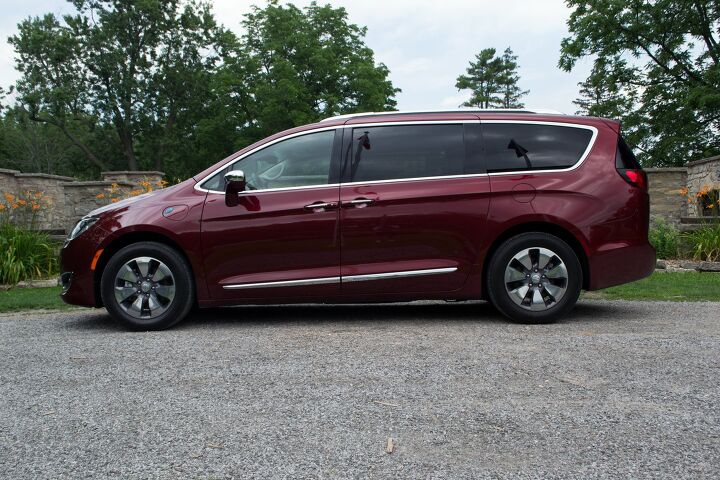
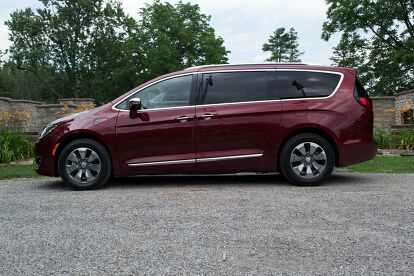


































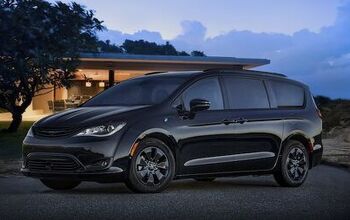
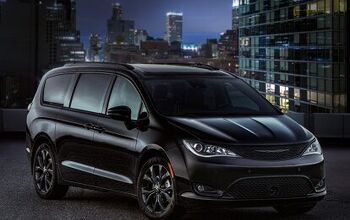

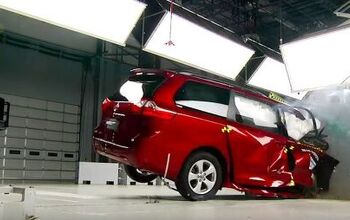
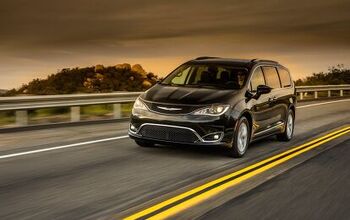
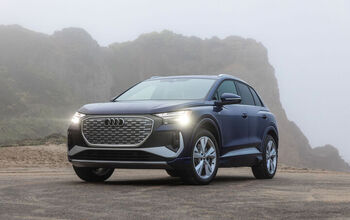

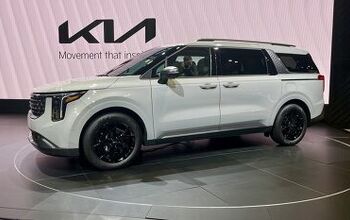
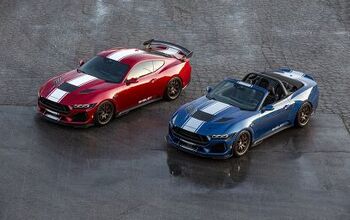

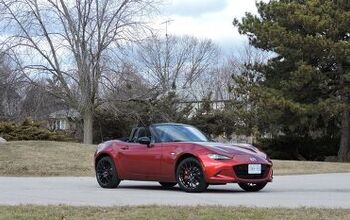
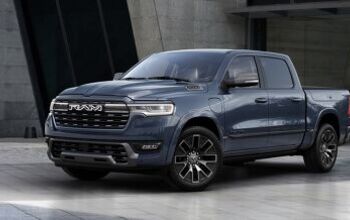

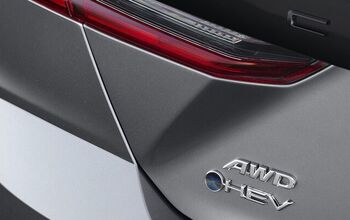
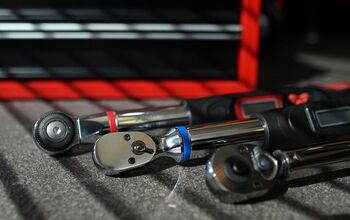
Comments
Join the conversation
Why does it have less power that the non-hybrid? This has the same engine as the non-hybrid plus a battery pack. It should have at least the same amount of horsepower as the non-hybrid, but not less.
Towing a 4700 pound sailboat from AZ to San Diego several times plus numerous other local area trips with a 2012 Town & Country. I had a 2010 Town & Country with almost 150,000 miles and NO major repairs even with heavy towing. After it was totaled by crazy driver I bought a 2012. My friends keep telling me it will fail from all the towing but no problems so far with almost 80,000 miles. Have also towed an A frame camper-almost 3000 lbs thru 15 states with no problem. Love the Stow & Go, the engine is great and wonder why newer cars no longer have a CD player.